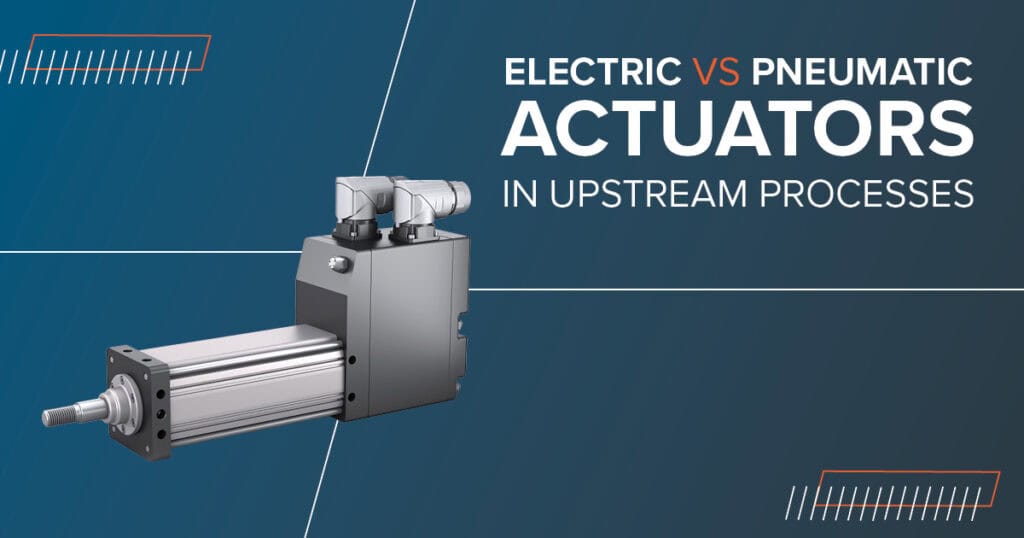Methane emissions are a serious concern in many industries, especially oil and gas production. The petroleum industry emits roughly 80 metric tons of methane on an annual basis, which represents as much as 40 percent of the methane emissions humans cause. Upstream oil and gas operations must take steps to reduce emissions.
Using electric actuators instead of traditional pneumatic actuators is one simple way to achieve this. This can reduce methane emissions by up to 40 percent, and it’s a more affordable upgrade than you might realize. In fact, the net cost difference is often negligible, while the environmental benefits are significant.
Differences Between Electric vs. Pneumatic Actuators
Most control valves in upstream production have been controlled by pneumatic diaphragm actuators. It’s easy to understand why this has been the industry standard for so many years. They use the well-stream gas to create power. Each time the valve is stroked, however, methane gas is released as a method of venting.
The primary case for using electric actuators is they do not require venting during operation. This means excess methane is not being released into the atmosphere. Many upstream operators use compressed air rather than motive gas or oil to power pneumatic actuation. This method can reduce methane emissions, but electric actuators can reduce emissions even more.
Benefits of Electric Actuators
Electric actuators are much simpler designs than pneumatic ones, which have multiple parts and relatively complex systems. Pneumatic actuators require more maintenance. Electric actuators can provide long-term cost savings with improved operational efficiency and lower maintenance expenses.
The complex designs of pneumatic actuators also result in more variables to monitor. Fluctuations in air quality, temperature, and other factors can directly affect certain pneumatic actuator parts. Meanwhile, electric actuators are less affected by these environmental variables. Even though they require electric power to control, they only use electricity when in use and are actually more energy efficient overall. By contrast, pneumatic actuators require compressed air or a consistent supply of pipeline gas to operate.
Additional Configurations for Emissions Reduction
When paired with a proper production tree of spools, valves, and fittings to regulate gas or oil flow, an electric actuator can manage a more efficient upstream pipeline. Most production trees use a surface safety valve (SSV) that allows for emergency shutdown if the pressure gets too high. Metering processes, Lease Automatic Custody Transfer (LACT) units, advanced monitoring and control systems, and predictive maintenance technology are other strategies you can implement along with electric actuators. The right technology and system configurations can help you achieve a much more efficient operation while reducing methane and other emissions that are harmful to the environment.
To learn more about electric actuators—along with other equipment and technology that can improve your upstream oil and gas operation—contact the team at DXP Pacific today. Let our pump and system design experts find the best solutions for your specific application and environment.

